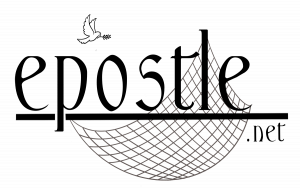Muiron: Through the Cassocks
Armodoxy for Today: Muiron from the Center
At the Blessing of the Holy Muiron, thousands of people come from throughout the world to witness this event which occurs once every seven years. For many who attend it is a once-in-a-lifetime event, something they have only heard about. Today, thanks to technology, the Blessing is streamed live and remains as a memory forever as a recording on digital platforms. With digital broadcasts, people anywhere on earth, with even humble means are able to witness this event. Today we will mark our scorecards with more hints of who’s who, based on their attire.
Not all who wear black are priests. The black cassock is the attire of the monastery. Deacons, priests and bishops – all three of the main orders – wear the black cassock. The priest – the kahana – may wear a pectoral cross if granted by his bishop, or upon passing his doctoral examine. Those wearing the hood – veghar – but without crosses are likely to be apegha-s. Those with hoods and the pectoral cross are the vartabeds. The ones with the hood, but wearing a panake – an oval medallion with the Holy Virgin and Child Jesus pictured on it are the bishops. The one with the diamond studded cross on his hood is the Catholicos of All Armenians. He may wear a panake or sometimes, the double-headed eagle as a symbol of authority.
A bishop is ordained for the purpose of overseeing a diocese. Those bishops assigned to a diocese are referred to as arachnort, Primates or Prelates. Dioceses are geographic areas that exist in Armenia and throughout the world. The Armenian Church has three other geographic areas outside of Armenia, that also have historic relevance, these have their own rules of governance. The Catholicosate of the See of Cilicia, today functioning out of Lebanon, has a Catholicos who heads it and consecrates bishops for service to the See. Jerusalem, because of its significance in Christianity, has an archbishop whose title is Patriarch. Likewise, in Istanbul, once Constantinople, the archbishop who is the ecclesiastical head of this geography is referred to as a Patriarch. Technically, use of the double-headed eagle was reserved for the Patriarch of Constantinople, because it was the “Center” of the world. The two heads of the eagle point right and left, as to signify from one end to the other end of the earth.
During the Blessing of Muiron ceremony, the Catholicos of All Armenians stands in the center, surrounded by the bishops of the church. Their order is not random. They line up according to their seniority within the Church, is based on their date of ordination. Standing next to the Catholicos are either the Catholicos of Cilicia or his representative, followed by the Patriarchs of Jerusalem and Constantinople or their representative. Bishops participate by holding many of the relics and artifacts that are held at Etchmiadzin, including the lance – the spear – which pierce the side of Jesus while he was on the Cross, and the holy relic of St. Gregory the Illuminator.
We pray today, Remember Lord, all the faithful everywhere, of men and women, old and young, who in faith and holiness come to you for strength and courage, to lead and guide your Holy Church. Amen.
Cover: Aghtamar/Holy Cross 2014 Epostle


